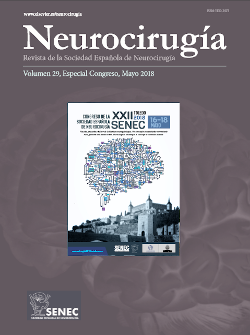C0222 - SYLVIUS: VIRTUAL REALITY COLLABORATIVE WORKFLOW SYSTEM FOR STEREOTACTIC ELECTRODE IMPLANTATION PROCEDURES
1Galgo Medical S.L., Barcelona, Spain. 2IMIM-Hospital del Mar, Barcelona, Spain.
Objectives: Planning stereotactic electrode implantation procedures requires precise communication of patient data among clinical disciplines, mainly epileptology and neurosurgery, both before and after surgery. Additionally, a natural and effective user interface allowing for data to be manipulated in 3D is becoming fundamental to understand the relationship between surgical plan and brain structures. Here we present SYLVIUS, a multimodal, virtual reality collaborative planning system which allows for easier communication among the different specialties involved in epilepsy surgery.
Methods: SYLVIUS supports the neuroimaging sequences needed for a successful implantation: T1, Gadolinium-enhanced T1, PET/SPECT, rotational angiography, and CT, plus externally pre-processed data like parcellations from FreeSurfer or tractography streamlines obtained from StarTrack, Diffusion Toolkit/Trackvis and others. SYLVIUS runs on a 24” stereoscopic zSpace 300 workstation (zSpace Inc., USA) to allow natural 3D interaction with patient and electrode data via a 3D stylus.
Results: The epileptology and neurosurgery teams coordinate their work on neuroimaging studies to create a 3D model of the patient in which to establish the hypothesis about the location of the epileptic focus and the placement of the electrodes. The SYLVIUS epileptologist module allows the definition of “go zones” (target areas for electrophysiological sampling) based on structural and functional sequences. The neurosurgeon module establishes “no-go zones” (areas of risk for an intervention) using CT and angiographic sequences. Head-tracked stereoscopic multimodal visualization combined with a natural 3D interaction and a mouse-based graphical user interface ensures an intuitive planning interface for safe electrode implantation.
Conclusions: SYLVIUS constitutes a paradigm change with regards to the planning of deep electrode implantation in epilepsy surgery. It is based on a collaborative workflow system designed to coordinate the sharing of patient data between clinical users and to provide interactive virtual reality tools facilitating the spatial understanding of electrodes with respect to vessels, neural tracts, and other structures.









